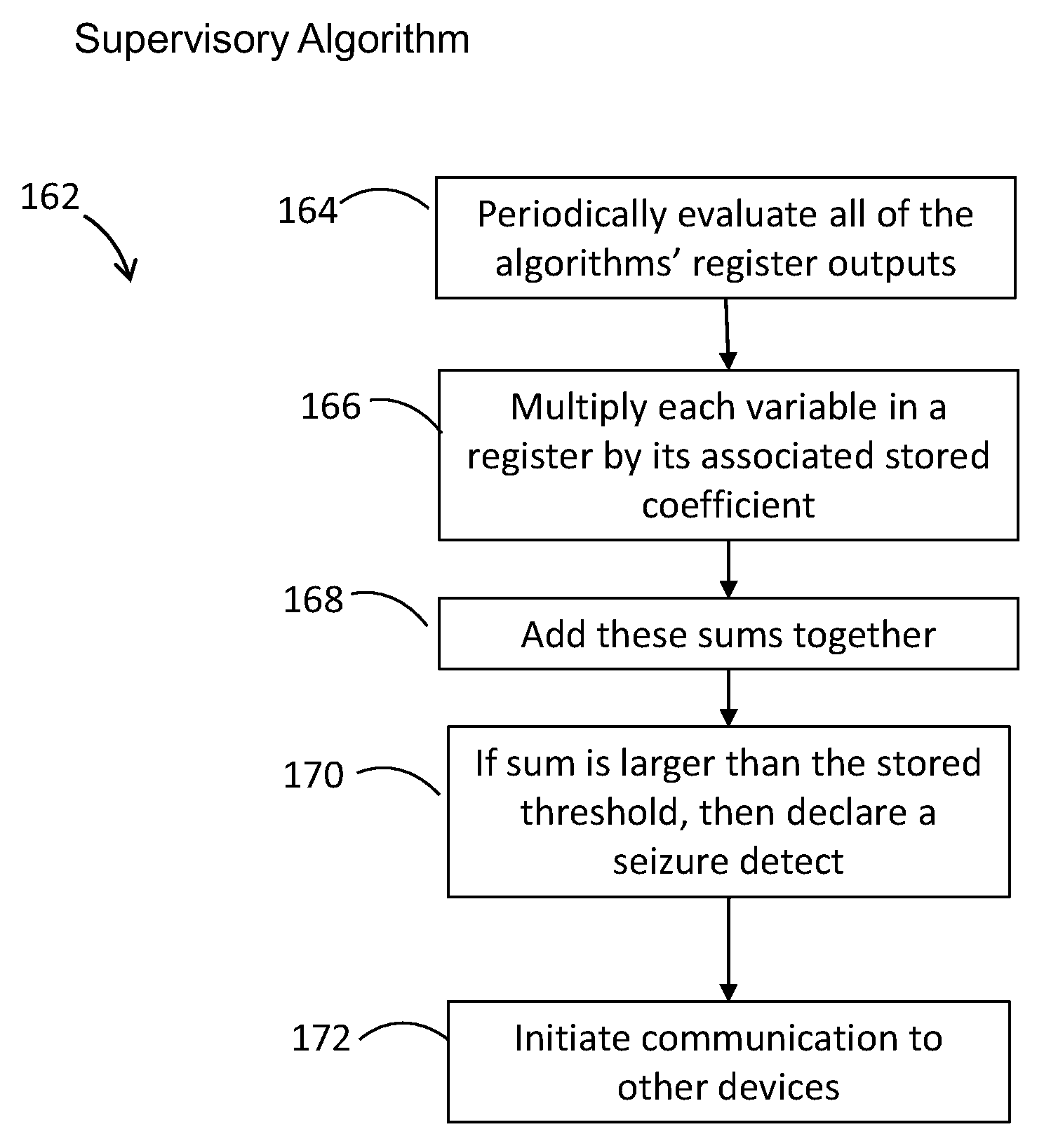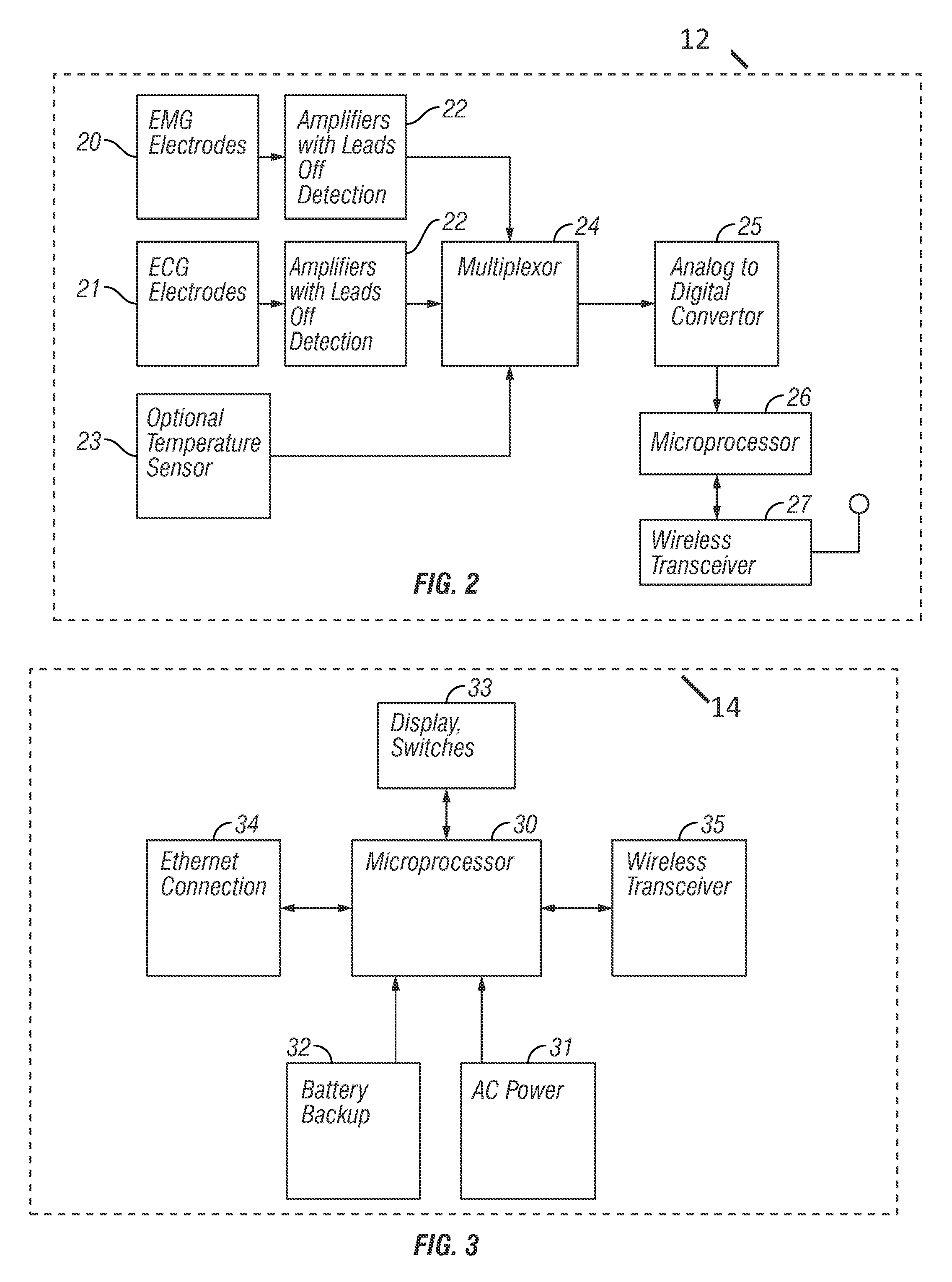Method and apparatus for detecting seizures
a seizure and seizure technology, applied in the field of seizure detection methods and apparatuses, can solve the problems of requiring some technical expertise, affecting the accuracy of seizure detection, so as to achieve the effect of raising confiden
- Summary
- Abstract
- Description
- Claims
- Application Information
AI Technical Summary
Benefits of technology
Problems solved by technology
Method used
Image
Examples
example 1
[0171]In one example, a patient who may be susceptible to having seizures may be monitored. The patient may, for example, be monitored during a period immediately following a hospitalization, or at some other time where they are at risk for SUDEP. It may be useful to set up the monitoring protocol for the patient, based at least in part, upon data obtained for the patient while the patient is monitored for seizures in a controlled setting. For example, during hospitalization the patient may be monitored and data may be collected for determining general seizure characteristics. The patient may, for example, be monitored with EMG over a period of several days, or some other interval, as necessary to collect data associated with a statistically significant number of seizures. During the period of hospitalization, the patient EMG data may be collected by placing bipolar differential electrodes on or near one or more pairs of muscles, e.g., agonist and antagonist muscle pairs. EMG data m...
example 2
[0180]In this Example 2, a patient may be set up to be monitored in a home setting using a pair of EMG electrodes on the biceps and triceps. The patient may be set up to be monitored based on a template file for patients that share a demographic with the patient. In Example 2, the patient may be an obese male and an initial set of coefficients and thresholds may be used to monitor the patient based on a set of coefficients and thresholds optimized for the entire set of data from all obese males for which data is available. As distinguished, from Example 1, the patient in this example may be monitored without previous evaluation in a hospital setting. That is, the patient may be monitored with weighting coefficients derived entirely by importing values associated with other patients, e.g., patients that share characteristics with the patient. The patient in Example 2 may be monitored for several weeks and the system may record electrode data. For the model data in Example 2, the syst...
example 3
[0181]In FIG. 23, the top trace labeled “EMG1-raw” shows EMG electrical activity using a bipolar EMG electrode arrangement. The trace labeled “EMG2-raw” is from a similar bipolar electrode arrangement (differential electrode) on the triceps of the same arm. The vertical scale in the FIG. 23 graphs, EMG1-raw and EMG2-raw, is signal amplitude, e.g., the differential signal between either the pair of EMG electrode inputs on the biceps or the differential signal between the pair of EMG electrode inputs on the triceps, and the horizontal scale shows time (in FIG. 23, the time window is approximately 4 h28′55″ to approximately 4 h29′00″). FIG. 23 shows the collection of 5 seconds worth of patient data. In some embodiments, data may be collected over some other time period. Attachment of EMG electrodes on opposing muscle groups, e.g., such as the biceps and triceps, may be beneficial for several reasons. For example, as further discussed below, an electrode configuration that involves oppo...
PUM
 Login to View More
Login to View More Abstract
Description
Claims
Application Information
 Login to View More
Login to View More - R&D
- Intellectual Property
- Life Sciences
- Materials
- Tech Scout
- Unparalleled Data Quality
- Higher Quality Content
- 60% Fewer Hallucinations
Browse by: Latest US Patents, China's latest patents, Technical Efficacy Thesaurus, Application Domain, Technology Topic, Popular Technical Reports.
© 2025 PatSnap. All rights reserved.Legal|Privacy policy|Modern Slavery Act Transparency Statement|Sitemap|About US| Contact US: help@patsnap.com



